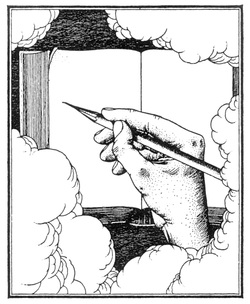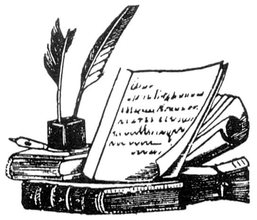
The Title
- The title should be catchy, something that will catch the reader’s attention.
- It should give the reader a good idea of what the article is about. If a title doesn’t describe the article well, some readers who would have liked it might not read it. It can help to try to figure out what the main idea of your article is, and then try to describe that.
- Try to keep the title short.
- Don’t use any punctuation in the title.
- The first sentence should also be catchy. Now that you have someone reading your article you want them to continue to read.
- In the first paragraph you should describe what you are writing about, so that the reader knows where the article is going. For example, if you are reviewing an event, tell your reader where it was, who put it on, what it is, when it is, and why you are writing about it. If you are writing about a product, tell your reader where to get it, who makes it, what it is, when it comes out, and why you are writing about it.
- Remember, your reader might have never heard about what you are writing about before. Make sure that you give enough details that readers don’t feel confused or in the dark.
- The second paragraph is a good place to start including some quotes. This will make your article more interesting.
- Remember, in order to quote someone in your article you should have both their first and last name, so make sure that you ask them what their name is and make sure you have the right spelling.
- When you are quoting someone you don’t always have to say what you asked them (question, answer, question, answer, etc.). Instead, you can build the quotes you gathered into your paragraph. For example, you could say, “While kids at the movie were just thinking about having fun, parents were happy to find good value for their money. John Smith, a parent of two, said, ‘This event was a great way to keep my kids busy without paying a fortune’.”
The next few paragraphs should add more details about your topic. For example:
- Tell some stories about your experience. If you are reviewing a new product, try to tell the reader about your experience using the product. If you are reviewing an event, try to tell the reader something unique that happened.
- Use some more quotes. For example, if you are writing about a product, you could interview other customers, employees at a store that sells the product or someone from the company that makes the product.
- Try to think about what your reader will be curious about, and then answer the questions you think they would want to ask. For example, if you are writing an article reviewing a craft sale some topics might include: What kind of crafts did you see? Was it busy? Were there a lot of other kids there, or were most of the customers adults? What did other customers have to say about their experience? Did you buy anything, and why or why not? What was most enjoyable about the sale? Was there anything that you would change? What did you find out from people selling their crafts? (For example, how long have they been making their crafts? How long do they take to make? Why did they start making these crafts?) If you brainstorm, you will be able to come up with all sorts of ideas like these!
- In the last paragraph you should sum up what the rest of the article said. To do this, try to think about what the main points are in the article. What do you want the reader to remember?
- The goal of the last sentence is will make the reader remember what they have read, so try to think up something catchy.


 RSS Feed
RSS Feed